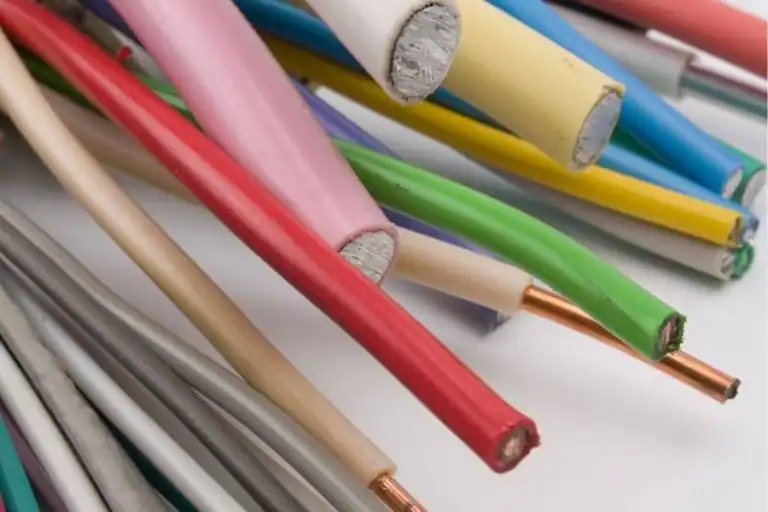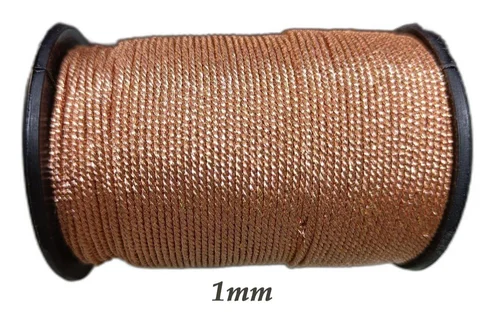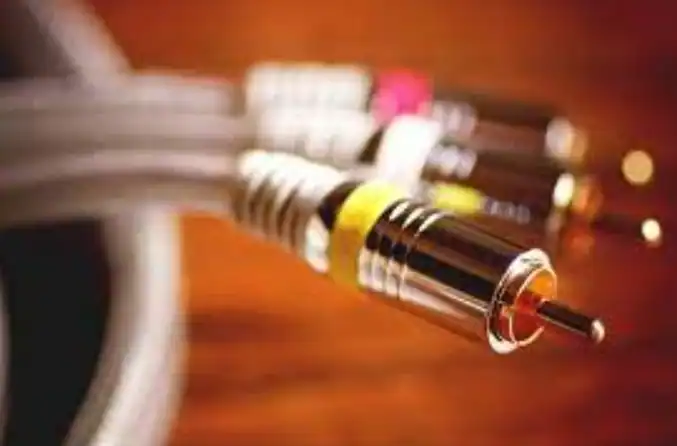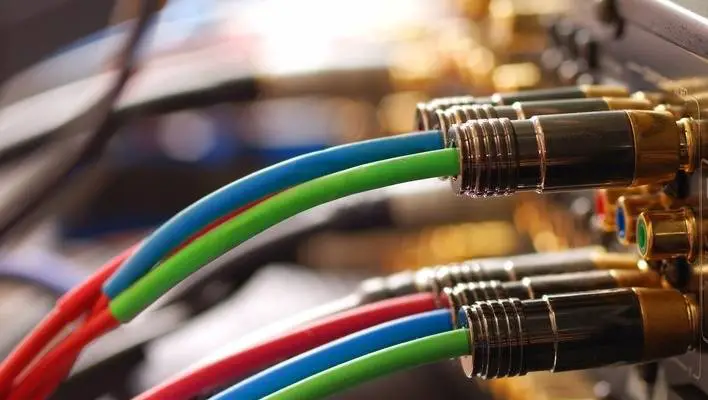Are you setting up a new sound system or trying to troubleshoot an issue with your existing speakers? Understanding speaker wire colors and their corresponding color codes is crucial for ensuring proper audio connectivity.
In this comprehensive guide, we will delve into the world of speaker wire colors, explaining the significance of each color code.
Whether you’re a seasoned audiophile or a beginner, this article will provide you with valuable insights to enhance your audio setup. So, let’s dive in to discuss!
Standard Speaker Wire Colors Code: An Overview
The standard color coding for speaker wires follows a convention where the positive wire is marked with a solid color, such as red or black, and the negative wire is marked with a corresponding stripe or dashed line. The color combinations can vary depending on the manufacturer, but the most commonly used color codes are:
- Red (+) and Black (-)
- White (+) and Black (-)
- Green (+) and Black (-)
- Blue (+) and Black (-)
Speaker Wire Colors Code (Guide 2024 With Examples)

When setting up a speaker system, it’s crucial to have a good understanding of speaker wire colors code. Speaker wires serve as the conduit for electrical signals between the audio amplifier and the speakers. Properly identifying and connecting the wires according to their color codes ensures accurate sound reproduction and prevents any potential damage to the audio equipment.
Why Speaker Wire Colors Code Matter
The use of color codes simplifies the installation process and eliminates confusion when connecting speakers. By following a consistent color scheme, it becomes easier to identify positive and negative terminals, which is crucial for maintaining proper speaker polarity and ensuring a balanced audio signal.
Common Speaker Wire Color Codes (Explanation & Tables 2024)
Different manufacturers may use various color combinations for their speaker wires. However, some color codes are widely adopted across the industry. Here are the most common speaker wire color codes:
1. Red and Black
One of the most popular color combinations for speaker wires is red and black. Red usually represents the positive (+) wire, while black denotes the negative (-) wire. This color code is widely recognized and used in many audio systems.
| Terminal | Color Codes |
|---|---|
| Positive (+) | RED |
| Negative (-) | BLACK |
2. Clear and Silver
Some speaker cables use clear insulation with silver conductors. In this case, the silver wire is usually the positive (+) wire, while the clear wire represents the negative (-) wire. It’s important to consult the manufacturer’s documentation to confirm the color coding for such cables.
| Terminal | Color Codes |
|---|---|
| Positive (+) | SILVER |
| Negative (-) | CLEAR (transparent) |
3. White and Black Stripe
White wires with black stripes are commonly used as positive (+) wires, while solid black wires represent negative (-) wires. This color combination is often found in home theater and car audio systems.
| Terminal | Color Codes |
|---|---|
| Positive (+) | WHITE (with Black stripes) |
| Negative (-) | BLACK |
4. Green and Black Stripe
Green wires with black stripes are typically assigned as positive (+) wires, while solid black wires indicate the negative (-) wires. This color code may vary among manufacturers, so it’s crucial to verify the coding with the specific product’s manual.
| Terminal | Color Codes |
|---|---|
| Positive (+) | GREEN (with Black stripes) |
| Negative (-) | BLACK |
5. Blue and Black Stripe
Similar to the previous color combination, blue wires with black stripes are often used as positive (+) wires, while solid black wires signify the negative (-) wires. Always refer to the manufacturer’s documentation for accurate wire identification.
| Terminal | Color Codes |
|---|---|
| Positive (+) | BLUE (with Black stripes) |
| Negative (-) | BLACK |
6. Other Color Combinations
While the above color codes are the most prevalent, it’s essential to note that different manufacturers may use alternative color combinations. It’s crucial to consult the product manual or contact the manufacturer directly to confirm the wire color coding for a specific speaker cable.
Identifying Positive (+) and Negative (-) Wires

To determine the positive (+) and negative (-) wires in a speaker cable, you can refer to the color coding mentioned earlier. The positive wire usually has a brighter or more vibrant color, such as red or silver, while the negative wire often has a darker color like black or clear. Additionally, some cables may have markings, such as “+” or “-“, to indicate the wire polarity.
Speaker Wire Gauge (Comprehensive Guide 2024)
The gauge of the speaker wire refers to its thickness or diameter. The wire gauge affects the electrical resistance and current-carrying capacity. Thicker wires with lower gauge numbers have less resistance and are capable of carrying more current, resulting in better audio quality. It is recommended to use a speaker wire gauge appropriate for your audio system’s power requirements.
Material Used for Speaker Cable: (2024 Comprehensive Guide)

Speaker cables are responsible for transmitting electrical signals from the amplifier to the speakers, and the materials used in their construction can significantly impact the overall sound performance. In this section of the guide, we will explore the different materials used for speaker cables, their characteristics, and how they influence audio quality.
1. Copper Speaker Cables
Copper is the most common material used in speaker cables, known for its excellent conductivity and affordability. It is an excellent conductor of electrical signals and offers low resistance, allowing for efficient transmission of audio signals.
Copper speaker cables are available in various gauges, with thicker cables offering lower resistance and better signal transfer. They are widely used in both consumer-grade and professional audio systems due to their reliability and cost-effectiveness.
2. Oxygen-Free Copper (OFC) Speaker Cables
Oxygen-Free Copper (OFC) is a purer form of copper that has been refined to reduce oxygen content. The presence of oxygen can cause oxidation and corrosion over time, leading to a degradation in audio quality.
OFC speaker cables minimize these issues, providing a cleaner and more reliable signal transmission. They are known for their superior conductivity and are often favored by audio enthusiasts and professionals seeking optimal performance.
3. Copper-Clad Aluminum (CCA) Speaker Cables
Copper-Clad Aluminum (CCA) speaker cables consist of a layer of aluminum coated with a thin layer of copper. These cables offer a more cost-effective alternative to pure copper cables while maintaining decent conductivity.
However, CCA cables have higher resistance compared to pure copper cables, which can result in some loss of signal quality, particularly over longer cable runs. They are commonly used in budget-friendly audio setups where cost considerations outweigh the slight compromise in audio performance.
4. Silver Speaker Cables
Silver is a highly conductive material that offers excellent signal transfer properties. Silver speaker cables are known for their ability to deliver exceptional clarity, detail, and transient response.
They are often preferred by audiophiles and individuals seeking the utmost audio fidelity. However, it’s worth noting that silver cables can be significantly more expensive than copper cables and may not provide a noticeable difference in sound quality for all listeners.
5. Copper-Silver Alloy Speaker Cables
Copper-silver alloy speaker cables combine the conductivity of copper with the enhanced performance characteristics of silver. These cables aim to strike a balance between cost and audio quality, offering improved signal transfer compared to pure copper cables.
The copper-silver alloy provides a smoother and more detailed sound reproduction, making them a popular choice among audio enthusiasts looking for an upgrade from standard copper cables.
6. Other Specialty Materials
In addition to the commonly used materials mentioned above, there are speaker cables available in various specialty materials. These include gold-plated cables, which offer enhanced corrosion resistance and conductivity, as well as exotic materials like palladium or rhodium.
These specialty materials cater to niche markets and individuals with specific preferences, often commanding higher price points.
Considerations When Choosing Speaker Cable Materials
When selecting the material for your speaker cables, it’s essential to consider factors such as your audio setup, budget, and personal preferences. Here are a few key considerations to keep in mind:
- Sound Preference: Different materials can have subtle effects on the sound characteristics, so consider whether you prefer a warmer or brighter sound signature.
- Budget: Determine your budget and prioritize the factors that are most important to you, such as cost-effectiveness or premium performance.
- System Compatibility: Ensure that the chosen speaker cable material is compatible with your audio equipment and the specific requirements of your setup.
- Cable Length and Gauge: Consider the length of cable needed for your setup and choose an appropriate gauge to minimize signal loss over longer distances.
How to Connect Speakers Using Color Codes (Latest Connection Guide)

Properly connecting speakers using color codes is a straightforward process. Here’s a step-by-step guide:
1. Matching Positive and Negative Terminals
Before connecting the wires, identify the positive and negative terminals on both your speakers and audio equipment. Match the positive terminal of the speaker with the positive terminal of the amplifier or receiver.
2. Stripping and Preparing the Wire
Strip approximately half an inch of insulation from the ends of the speaker wire. Twist the exposed strands tightly to prevent any loose connections.
3. Connecting the Wires to the Speakers
Insert the prepared speaker wire into the corresponding positive and negative terminals of the speaker. Ensure a snug fit and make sure there are no loose strands that could cause a short circuit.
4. Connecting the Wires to the Amplifier or Receiver
Follow the same process for connecting the speaker wires to the amplifier or receiver. Match the positive and negative terminals accordingly, ensuring a secure connection.
Recommended:
- Guide to Tell Green Wire Positive or Negative: (Steps & Examples)
- Projector Ports: What Are The Ports Available In A Projector?
- How to Connect Android Phone to Projector via USB Cable?
- 4K 30hz Vs 60hz: Which HDMI Should I Pick?
- How To Connect Nintendo Switch To Projector
Best Practices for Speaker Wire Installation

Proper installation of speaker wires is crucial for optimal audio performance. Here are some best practices to follow:
1. Proper Wire Length
Ensure that the speaker wires are long enough to reach the desired speakers without excessive slack. Measure the distance between your amplifier or receiver and the speakers, and add a bit of extra length for flexibility.
2. Strip and Tin the Wires
Strip a small portion of insulation from the end of each wire and tin them by applying solder. Tinning the wires helps maintain good conductivity and prevents fraying.
3. Twist the Wires
Twist the exposed strands of each wire tightly together to create a solid connection. Twisting the wires reduces resistance and minimizes the chances of signal loss.
4. Use Banana Plugs or Spade Connectors
Consider using banana plugs or spade connectors to connect the speaker wires to your amplifier or receiver. These connectors provide a secure and reliable connection while allowing for easy disconnection if needed.
Troubleshooting Common Speaker Wire Issues
Despite proper installation, speaker wire issues can still occur. Here are some common problems and their troubleshooting steps:
1. Poor Audio Quality
If you experience distorted or low-quality audio, check for loose connections and ensure that the wires are securely connected to both the speakers and the amplifier or receiver. Additionally, inspect the wires for any damage or fraying that might affect the signal transmission.
2. Speaker Phase Issues
Incorrect phasing can result in a loss of bass response and an imbalanced soundstage. To resolve phase issues, ensure that the positive (+) and negative (-) wires are connected correctly to both the speakers and the amplifier or receiver.
3. Connectivity Problems
If you encounter connectivity problems, double-check the wire connections to ensure they are securely attached. Inspect the connectors and terminals for any damage or corrosion that could hinder the electrical connection.
Speaker Wire Colors Code: FAQs

Can I use any speaker wire for my audio system?
While you can technically use any wire to connect your speakers, it’s recommended to use speaker wires specifically designed for audio applications. These wires are constructed to minimize signal loss and ensure high-quality sound reproduction.
How do I determine the gauge of my speaker wire?
The gauge of the speaker wire is denoted by a number. The lower the gauge number, the thicker the wire. You can consult the packaging or product specifications to identify the wire gauge.
What happens if I connect the speaker wires in reverse polarity?
Reversing the polarity of the speaker wires can result in a loss of bass response and an imbalanced soundstage. It’s important to ensure that the positive (+) and negative (-) wires are correctly connected to maintain proper phasing.
Can I extend my speaker wires?
Yes, you can extend your speaker wires if needed. However, ensure that the wire gauge of the extension matches the gauge of the existing wire to maintain consistent signal transmission.
Should I use solder or connectors to connect my speaker wires?
Both soldering and connectors can provide reliable connections. Soldering is a permanent solution that ensures a solid bond, while connectors offer flexibility and ease of disconnection if needed. Choose the method that best suits your preferences and requirements.
The Bottom Line
Understanding speaker wire colors and their corresponding color codes are essential for anyone involved in audio setup or troubleshooting. Remember to refer to the provided documentation or wire markings to identify the specific color code used in your audio system.
Incorporate the tips and best practices outlined in this article to work with speaker wires effectively. Regular maintenance, careful wire routing, and secure connections will contribute to the longevity and performance of your audio setup.
If you’re ready to take your audio experience to the next level, ensure you have the right speaker wire colors and follow the proper installation procedures. Get started now and enjoy enhanced sound quality and immersive listening pleasure! Thank You For Reading!
As an experienced Software Engineer in a Projection-Based Technology Company, I love sharing my Knowledge to utilize and help others to learn more about Projectors. Thus one can get the right Projector for their needs.



